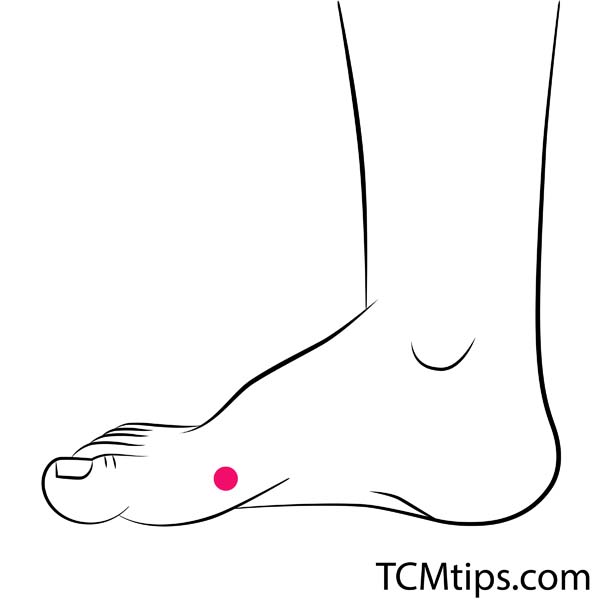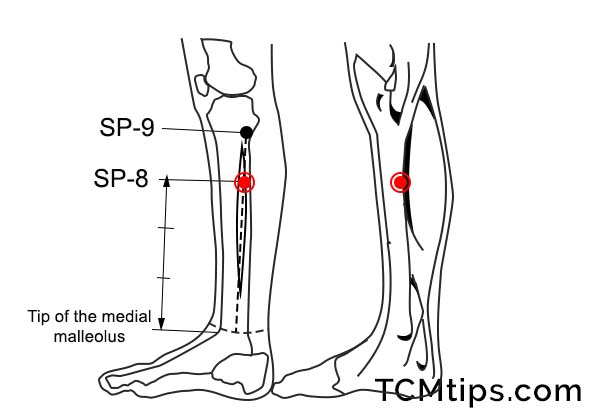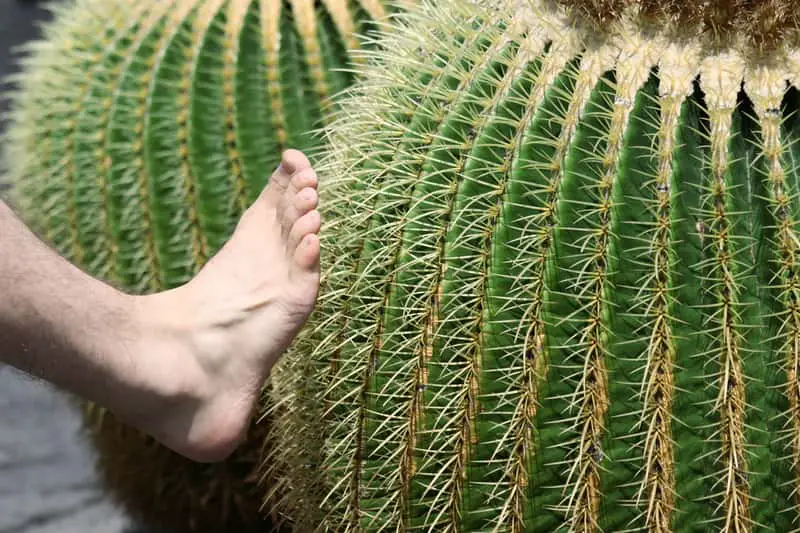I once had a friend whose feet always felt tingly. He loved to sit a lot, so he would say his feet were tingly from sitting in a place for too long. It was until his feet became painful and he could barely walk that he found out from his doctor that he had peripheral neuropathy. Looking for a cure to his condition is what led to this topic, acupressure points for peripheral neuropathy.
Peripheral neuropathy is a medical condition that occurs as a result of the damage of the nerves that carry messages from the brain and spinal cord to the rest of the body. The symptoms of peripheral neuropathy begin with numbness, or a tingling feeling in your hands or feet, then progresses to burning pain, extreme sensitivity to touch, weakness of the muscle, lack of body coordination, and paralysis.
Peripheral neuropathy is a common medical condition; over 20 million people in the United States have a form of it. For most of the patients with peripheral neuropathy, the condition was acquired (they didn’t have it from birth), while for a few others, it was genetically transmitted. The causes of peripheral neuropathy include physical injury, diabetes, vascular and blood problems, systemic autoimmune diseases, and hormonal imbalance.
Mostly, the medical treatment plan for peripheral neuropathy lasts for years and costs a fortune. However, acupressure therapy is as well effective but costs less than conventional treatment. Therefore, in this article, I’ll show you the acupressure points for peripheral neuropathy in the legs that you can use to manage both foot neuropathy and diabetic neuropathy.
Can Acupuncture Help With Peripheral Neuropathy?

Yes, acupuncture can help with peripheral neuropathy, and a pilot study supports this. This pilot study researched the effect of acupuncture on peripheral neuropathy (PN) by measuring the changes in nerve condition and assessment of subjective symptoms in 47 patients. The study lasted for a year and during this period, 21 patients were administered acupuncture therapy, while the remaining 26 were administered the best medical care that isn’t specific to the treatment of PN.
At the end of the study, 16 of the 21 patients in the acupuncture group and 4 patients in the control group had their symptoms improved. 3 patients in the acupuncture group and 7 in the control group didn’t show any change, while there was aggravation in the symptoms for 2 patients in the acupuncture group and 15 patients in the control group. This result proved that acupuncture, to a large degree, is effective in the treatment of peripheral neuropathy.
Can Acupressure Cure Peripheral Neuropathy?
Like acupuncture therapy, acupressure can only assist in relieving the symptoms of peripheral neuropathy rather than cure the condition. People with PN will mostly experience pain and tingling sensations. These are the major symptoms that acupressure therapy provides relief to. Thus, acupressure for PN is mostly used for pain management.
The work of an acupressure therapist in treating PN is to relax the pained muscles in your body by stimulating the pressure points on your body responsible for those symptoms. Also, some researchers believe that both acupressure and acupuncture therapy releases opioid peptides in the brain that produces pain relief effects. Acupressure improves your immune system and aids the flow of energy in the body.
Acupressure Point For Foot Neuropathy
For neuropathy that affects your foot, here are the acupoints to pay attention to:
Acupoint: ST-36 (Other Names: Stomach-36/Zu San Li/Leg Three Miles)

ST-36, Zusanli, or Leg Three Miles is the first of the acupressure points for foot neuropathy. It is a stomach acupressure point that is located on the feet. To locate ST-36, place four fingers at the end of your knee. The depression between the bone and muscle where the fourth finger rests is ST-36.
In Traditional Chinese Medicine (TCM), Zusanli is responsible for harmonizing and strengthening the spleen and stomach. It also tonifies the blood and Qi and calms the Shen. It is for these reasons that this acupoint is also used in the treatment of gastric pain, abdominal distention, and even poor appetite. ST-36 also serves as one of the acupressure points for psoriasis.
Senior TCM Therapist, Ms. Mai Sogawa, recommends ST-36 for foot and gastrointestinal symptoms, even though it is also famous for boosting immunity and the deep peroneal nerve passes nearby.
Acupoint: GB-34 (Other Names: Gallbladder-34/Yang Ling Quan/Yang Mound Spring)

The gallbladder meridian acupoint, GB-34, is the next of the acupressure points for peripheral neuropathy. This pressure point is referred to as Yanglingquan in Chinese, which translates to Yang Hill Spring. Like Zusanli, Yanglingquan is also located on the feet. You’ll find it in the dent below the small bone jutting out at the side of the knee.
In TCM, GB-34 is a notable acupoint for the movement of the Liver Qi. It is also an acupoint for the treatment of any illness related to the sinews. Therefore, while GB-34 is effective in reducing neuropathic pain, it also serves as an effective treatment for numbness of the lower body, swellings in the knee, and beriberi.
Ms. Mai Sogawa points that GB-34 is effective for leg pain, numbness, and lower back pain while some refer to GB-34 as acupressure for shaky hands.
Acupoint: SP-3 (Other Names: Spleen-3/Tai Bai/Great White)

Another of the acupressure points for peripheral neuropathy in the leg is SP-3. This spleen meridian acupoint is called Taibai in Chinese, and like the other acupoints, it’s located on the foot. To locate SP-3, bend your toes downwards. The medial point of the big toe, on the sole of your foot, where the crease that formed when you bend your toes end is SP-3.
SP-3 helps in pain reduction for patients with chemotherapy-induced neuropathy. Ms. Mai Sogawa upholds that this acupressure point is used to treat beriberi and constipation, and beriberi is truly a medical issue reated to peripheral neuropathy. The medial plantar nerve runs around this point.
But more than bringing relief to neuropathic pain, this acupoint also treats gastric pain, diarrhea, and overweightedness. If you have dry skin, however, learn about these acupressure points for dry skin.
Acupoint: SP-8 (Other Names: Spleen-8/Di Ji/Earth Cure)

The next of the acupressure points for peripheral neuropathy for the foot is SP-8. This pressure point is called Diji in Chinese and, of course, is located on the foot. You’ll find SP-8 along the medial line of the lower leg. It is located at the center of the inner ankle, in the gap between the upper and lower bones inside the knees, which is positioned about one-third of the lower knee.
SP-8 functions as a regulator of the Qi and mover of the blood. This is why in addition to bringing pain relief for neuropathic pain, it is also used in the treatment of irregular menstruation, abdominal pain, as well as serves as one of the acupressure points for lower back pain.
According to Ms. Mai Sogawa, SP-8 is also used for gynecological diseases such as swelling, menstrual cramps, and irregular menstruation, and this is so becasue the tibial nerve passes nearby this acupoint.
Acupressure For Diabetic Neuropathy
In TCM, impaired blood flow is responsible for diabetic neuropathy. However, the stimulation of acupressure points can help improve blood flow in the peripheral nerve and reduce the severe pain of diabetic neuropathy. Below is the acupoint you need to stimulate diabetic neuropathy.
Acupoint: Bl-56 (Other Names: Urinary Bladder-56/Cheng Jin/Sinews Support)

Bl-56, Chengjin, or Sinew Support is the acupressure point for diabetic neuropathy. This Urinary Bladder meridian acupoint is located on the foot like the rest of the peripheral nerve pressure points. You’ll find it at the back of the leg, six-finger width from the center of the back of the knee. It rests almost at the top of the calf muscle.
Bl-56 helps relax the sinews, which is why it is effective for treating the muscle weakness symptom of PN. Bl-56 is also used clinically to treat hemorrhoids and spasms of the leg. Ms. Mai Sogawa suggests tha this acupoint is also effective for leg pain and muscle cramps, and like SP-8, it is becuase the tibial nerve runs nearby this acupoint.
Conclusion
The acupuncture points introduced in this article are actually used in the treatment of peripheral neuropathy in patients with spinal canal stenosis, using a low-frequency therapeutic device and moxibustion. Ms. Mai Sogawa is of the opinion that you can expect to relieve symptoms of peripheral neuropathy by stimulating and warming with acupressure.

Try our Anti-Aging Gua Sha Tool designed to bring out your skin’s natural glow.
Best Gua Sha Product- Anti-Aging: The tool is designed to target 11 specific aging signs such as wrinkles and sagging skin. By following the 7-step routine, users can improve skin firmness and reduce fine lines naturally.
- Enhances Skincare Routine: It works effectively with serums and lotions, boosting absorption and efficacy of skincare products.
- Visible Skin Improvement: Users can expect a smoother complexion, reduced puffiness, and a more youthful appearance.
 P. Sze
P. Sze 


















